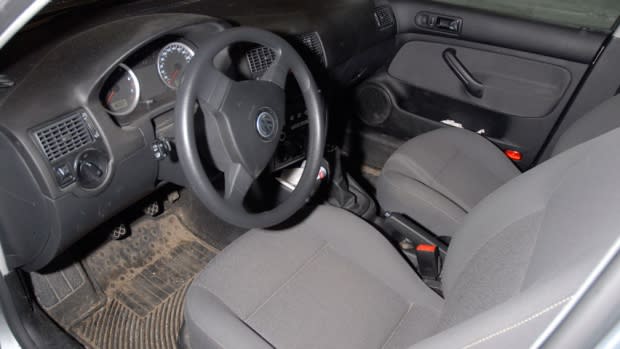Oland homicide investigation was slowed by RCMP forensic lab limits, officer testifies
The Saint John Police Force investigation into who killed Richard Oland in 2011 got bogged down by RCMP limits on the number of exhibits its forensic labs would accept for analysis, Dennis Oland's murder retrial heard Tuesday.
Sgt. Mark Smith, the head of the municipal force's forensic identification section, testified his initial request was rejected by the national lab in Ottawa because he had too many exhibits and he wanted the results too soon.
Smith didn't tell the court how many he asked to send, but police gathered more than 564 pieces of evidence in the case, the court heard during Oland's first trial in 2015.
An RCMP lab strategist told Smith he could send only five exhibits to start, with a turnaround time of 25 days, which was "about the shortest you can get."
He had to wait for those results to come back before he could send more, he said.
Forensic testing continued for another two years.
It was November 2013 when police charged Dennis Oland with second-degree murder in his father's death.
Oland was the last known person to see the multimillionaire alive when he visited him at his investment firm office at 52 Canterbury St., on the evening of July 6, 2011.
The body of the 69-year-old was discovered in his office the next morning, face-down in a pool of blood. He had suffered 45 sharp- and blunt-force injuries. No weapon was ever found.
A jury found Oland guilty in December 2015, but the New Brunswick Court of Appeal overturned his conviction and ordered a new trial, citing an error in the trial judge's instructions to the jury.
Oland, 50, is now being retried by judge-alone.

The trial is scheduled to continue in Saint John's Court of Queen's Bench on Wednesday at 9:30 a.m., with Smith back on the witness stand. His testimony, which began in December but was put on hold because he was ill, is expected to continue for the rest of the week.
On Tuesday, Smith told the court the first batch of evidence he sent to the RCMP lab on July 21, 2011, included a sample of the victim's blood to serve as a DNA standard to test other evidence against, and swabs of the victim's fingernails from both hands.
He also sent two swabs of the car the accused was driving when he visited his father on the night he was killed — from the inside handle of the driver's door and the driver's door trunk release switch.
"I agreed with [the lab] these would be the most probative to send at that time," said Smith.
Police had seized Oland's Volkswagen Golf City during a search of his home in Rothesay on July 14, 2011.
The car was towed to the police garage, where Smith took the samples and seized several items, including a receipt from a gas station in Saint John's north end dated July 7, 2011, at 9:24 a.m. — shortly after the victim's body was discovered in his uptown office.
Although the car interior was "dirty" and did not appear to have been cleaned recently, there were no visible bloodstains and chemical reactants produced negative results, said Smith.

He received the forensic lab report on the first batch of exhibits on Aug. 8, 2011, but did not reveal the results in court. They will be discussed later in the trial, said lead Crown prosecutor P.J. Veniot.
The second batch of exhibits, sent on Sept. 12, 2011, included hair found in both of the victim's hands, fingernail clippings from both hands, and two more swabs of Oland's car — from the rear of the steering wheel and the front passenger seat headrest.
In October 2012, Saint John police sent some items to two private labs for further testing, said Smith, without elaborating.
4-day delay on bloodstain analysis of scene

A RCMP bloodstain pattern analyst didn't examine the crime scene until four days after the victim's body was discovered, the courtoom heard.
Saint John police decided to request the RCMP's help on July 9, said Smith, who had been busy processing the scene alone because the forensics unit was short-staffed.
That day, then-Insp. Glen McCloskey, the head of the criminal investigations division, was in the foyer outside the bloody office and saw Smith taking measurements of bloodstains.
McCloskey asked what he was doing and Smith explained he hoped to send the data away to an expert for analysis.
"That was when he asked me if I would prefer to have a bloodstain analyst come to the scene," Smith told the court.
"I agreed that that would be very beneficial, if it was possible."
Sgt. Brian Wentzell arrived from Halifax on July 11.
The retrial has not yet heard from Wentzell. During Oland's first trial, Wentzell testified his abilities were "limited" by the amount of time that had passed before he was called.
By the time he arrived at the scene, the body had been removed, several people had been in and out of the office, and some items had been moved, including a desk, chair, backpack and some papers, he had said.
Still, Wentzell immediately set about documenting the scene, said Smith. He took photographs and measurements, circled bloodstains and marked their directionality, he said.

